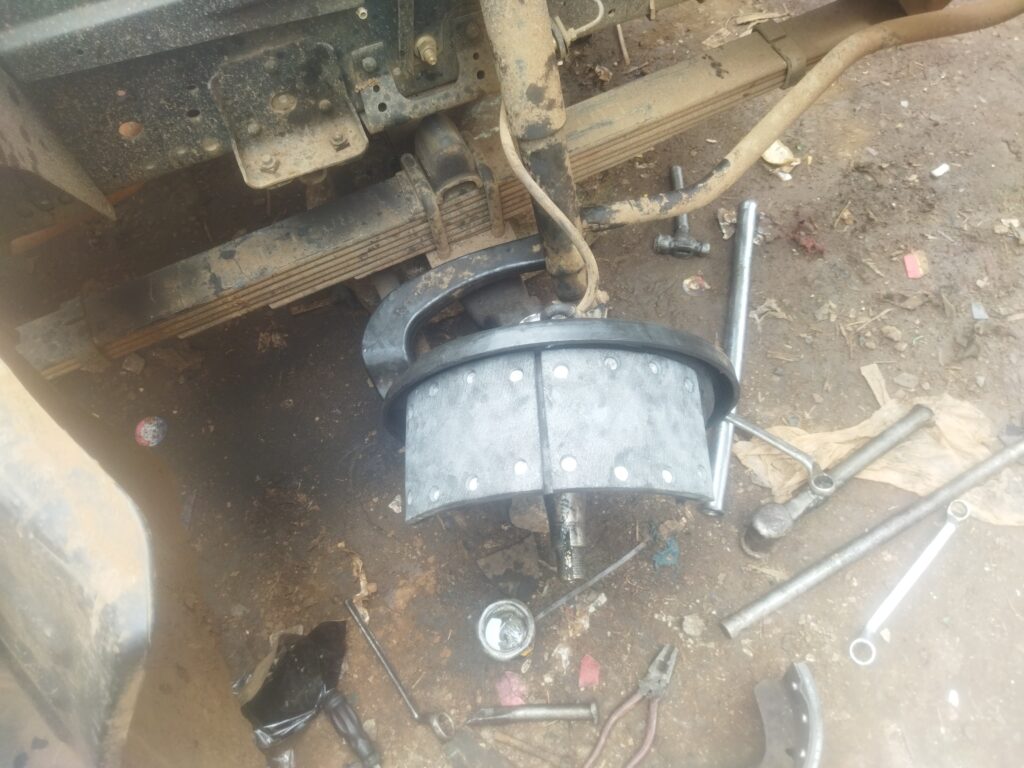
Brake failure, especially when driving, can be an extremely dangerous and frightening experience. While that’s the last thing you want to happen to you, it’s best to have an idea of what to do just in case.
You can never be too sure!
Understanding the right and wrong actions can make all the difference in such a critical moment. And that’s exactly what we will discuss in this article.
Let’s get started!
What to Do
Here are the steps to follow when you find yourself in a sticky road situation:
1. Stay Calm and Assess the Situation
The first instinct when your brakes fail on the road might be fear. However, it’s crucial to stay calm. Panicking can cloud your judgment, causing you to make hasty or incorrect decisions. Instead, take a deep breath and assess the severity of the situation.
- Is the brake pedal firm but ineffective, or is it sinking to the floor with no resistance?
- How fast are you driving?
- Are you on a highway, city street, or rural road?
- Are there other vehicles nearby?
- Are there any obstacles in your path?
Assessing the situation will help you decide your next course of action.
2. Warn Other Drivers
Other drivers on the road might not be aware of your situation, making it even more dangerous. So, immediately alert them to prevent additional accidents and give yourself room to maneuver safely.
Here’s what to do:
- Turn on Hazard Lights: As soon as you realize your brakes have failed, turn on your hazard lights to signal to other drivers that something is wrong.
- Use the Horn: If you’re in heavy traffic or approaching an intersection, use your horn to alert others. A continuous honk can warn drivers and pedestrians of the impending danger.
- Hand Signals: If possible, use hand signals to communicate with nearby drivers. This is particularly necessary if your vehicle’s electrical systems have also failed.
3. Carefully Engage the Emergency Brake
The emergency brake, or the parking brake, operates independently of the main brake system. It can help bring your car to a stop if the primary brakes fail. Here’s how to use it effectively:
- Gradual Engagement: Slowly engage the emergency brake by pulling up on the lever or pressing the button. Sudden engagement can cause the wheels to lock up, leading to a skid.
- Feel for Resistance: As you engage the emergency brake, feel for resistance. If the car starts to slow down, maintain the pressure until you come to a complete stop.
- Avoid Full Lock: If you feel the wheels starting to lock, ease off slightly to maintain control of the vehicle.
4. Downshift into a Lower Gear
If your vehicle is equipped with a manual transmission, downshifting can help reduce speed. In an automatic vehicle, most modern cars allow you to select lower gears manually.
Here’s how downshifting can help:
- Manual Transmission: Gradually downshift to lower gears, one gear at a time. This will increase engine resistance and slow the vehicle.
- Automatic Transmission: Use the gear selector to shift into a lower gear, such as “L” (Low) or “2” (Second Gear). This will also increase engine braking.
Note: Avoid downshifting too quickly, as this can cause the engine to over-rev and lose control.
5. Pump the Brakes
If your brakes have partially failed or if the failure is due to a loss of hydraulic pressure, pumping the brakes might help. Quickly press and release the brake pedal several times. This action can build up enough pressure in the brake lines to restore some braking power and give you enough control to slow down and stop the vehicle.
6. Safely Get off the Road
Your main focus should be getting off the road as safely as possible. Look for an open space or a flat area where you can steer your vehicle to a stop. Avoid driving into traffic or trying to navigate through narrow spaces.
7. Turn Off the Engine
Once you’ve stopped your vehicle safely, turn off the engine. This prevents the car from accelerating unexpectedly. However, only do this after you’ve brought the vehicle to a safe and complete stop, as turning off the engine can disable power steering and make the vehicle harder to control.
8. Signal for Help
After coming to a stop, make sure your vehicle is visible to other drivers. Keep your hazard lights on, set reflective triangles if you have them, and call for roadside assistance or emergency services. If you have a cell phone, this is the time to use it to get help.
9. Get Your Brakes Inspected by a Professional
Once you’re safe, have your brakes inspected by a professional mechanic. Even if you manage to stop the vehicle without an accident, the cause of the brake failure needs to be identified and repaired before you drive again.
Brake failures can result from various issues, including worn brake pads, a leak in the brake fluid, or a malfunction in the braking system. A thorough inspection will ensure your vehicle is safe to drive.
What Not to Do
Here’s what you should never do when your brakes fail while driving:
- Do Not Panic: It’s worth repeating: do not panic. Panicking leads to impulsive decisions, which can worsen the situation.
- Do Not Turn Off the Engine Before Stopping Safely: Turning off the engine while the vehicle is still moving can disable power steering and power brakes, making it much harder to control your car.
- Do Not Yank the Emergency Brake: Pulling the emergency brake too quickly can cause your wheels to lock up, leading to loss of control.
- Do Not Downshift Too Quickly: While downshifting can help slow your vehicle, doing it too quickly can cause the engine to over-rev or the wheels to skid.
- Do Not Aim for Hazardous Obstacles: Avoid steering toward any obstacles, such as trees, poles, etc.
- Do Not Shift into Neutral: Shifting into neutral will disconnect the engine from the wheels, removing any engine braking effect. This could increase your speed downhill and make it harder to slow the vehicle using other methods.
FAQs
What should you do to stop a vehicle when brakes fail?
If your brakes fail, your primary goal should be to stay calm and use alternative methods to slow down and stop the vehicle. This includes downshifting, carefully using the emergency brake, and pumping the brakes while gradually steering towards a safe area.
Should you put your car in neutral if your brakes fail?
Generally, we don’t recommend putting the car in neutral because it disengages the engine from the wheels, eliminating engine braking. Instead, downshift to lower gears to help slow the vehicle.
What happens if your brakes stop working while driving?
If your brakes stop working, you may lose control of your vehicle if you don’t take immediate and appropriate action. The car may not slow down as expected, increasing the risk of a collision.
What are the signs of bad brakes?
Common signs of bad brakes include:
- Squeaking or grinding noises when braking
- A spongy or unresponsive brake pedal
- Car pulling to one side when braking
- Longer stopping distances
If you notice any of these signs, have your brakes inspected as soon as possible.
Wrapping Up
Brake failure is a terrifying experience, but knowing how to respond can help you tackle the situation safely. Stay calm, use the techniques we’ve outlined above, and avoid the common mistakes that can turn a dangerous scenario into a catastrophe.
Most importantly, ensure your vehicle’s brakes are regularly inspected and maintained to reduce the risk of brake failure in the first place. Ready to ramp up your safety? Contact us today for high-quality braking solutions.

